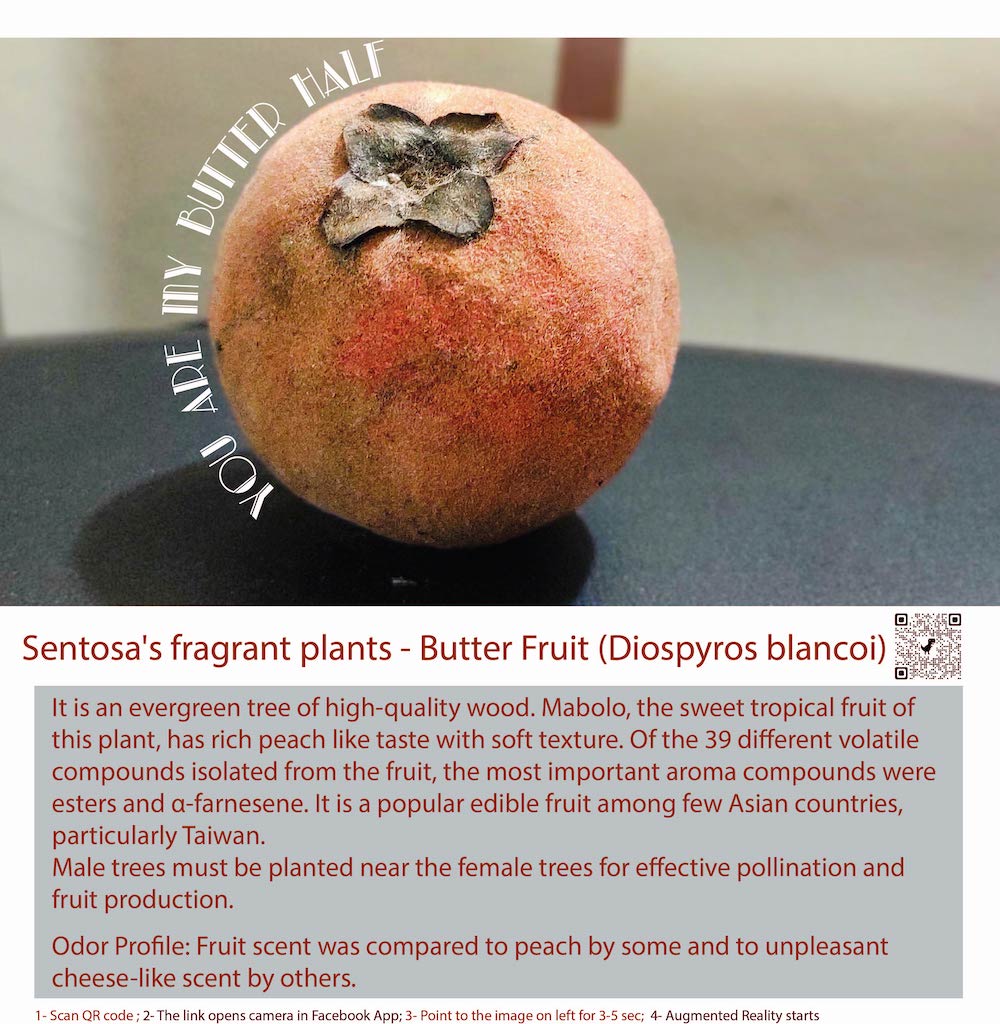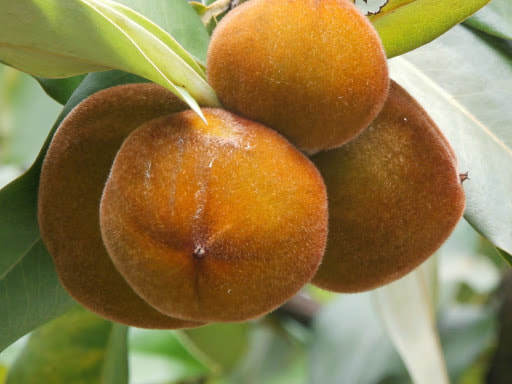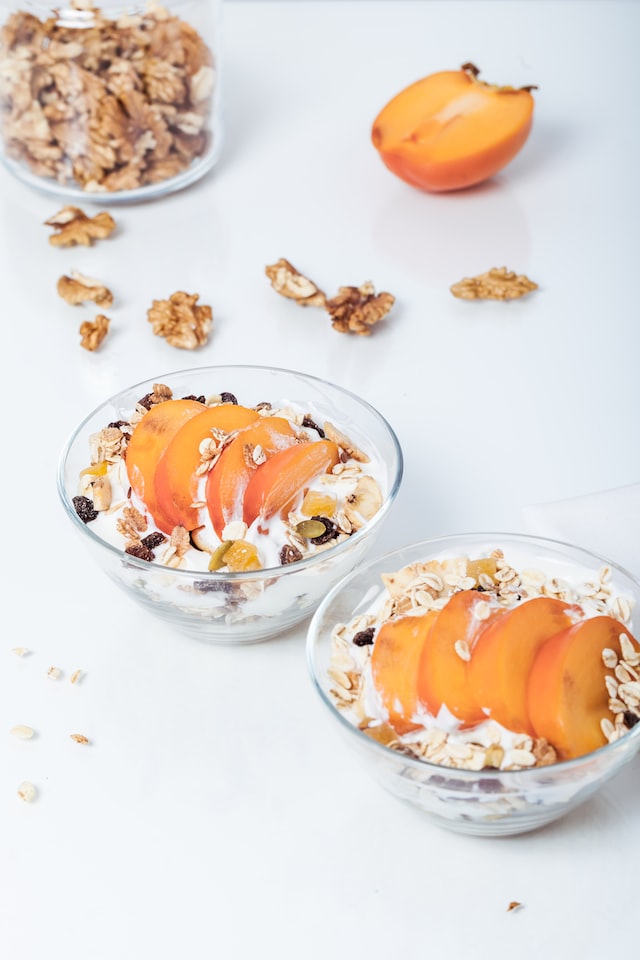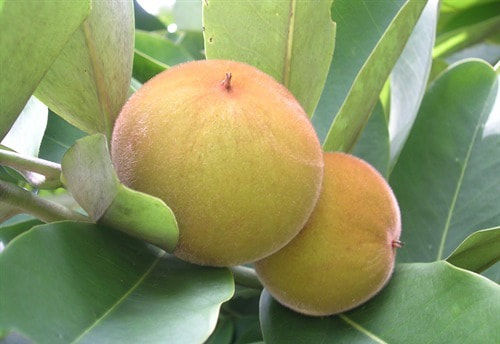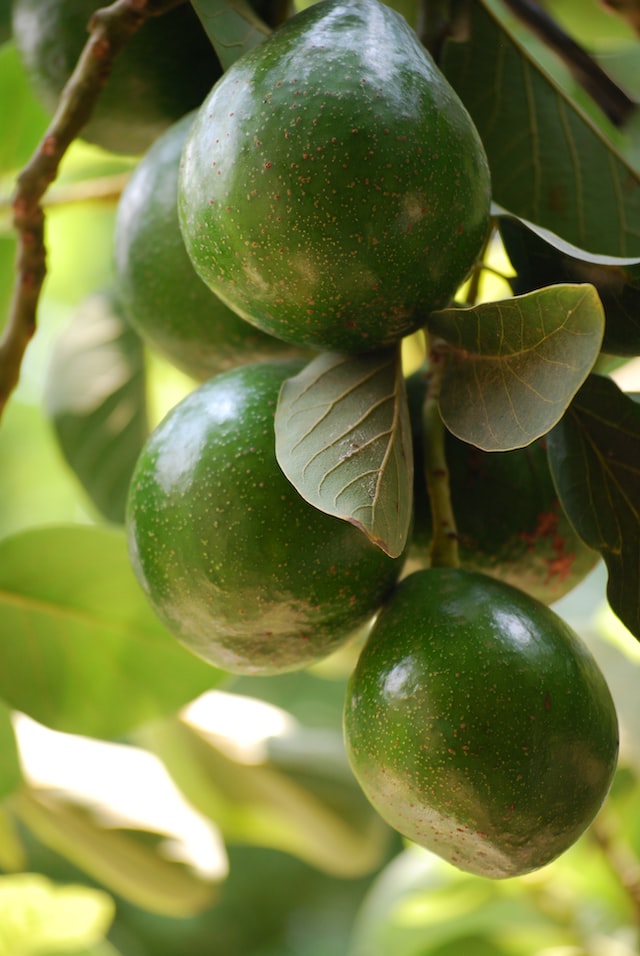Experience the Essence of Sentosa with Our Butter Fruit Perfume
Butter Fruit (Avocado): A Versatile and Nutrient-Rich Wonder
Butter fruit, more commonly known as Avocado, is a versatile and nutrient-rich fruit that has gained immense popularity worldwide. Its creamy texture, subtle flavor, and numerous health benefits have made it a favorite ingredient in perfumes, therapeutic oils, culinary delights, and traditional medicine. This article explores the multifaceted nature of Butter fruit, its fascinating history, culinary uses, therapeutic properties, and fun crazy facts.
Appearance and Flavor:
Butter fruit, scientifically known as Persea americana, is an evergreen tree native to Central and South America. The fruit is pear-shaped with a leathery, dark green skin that turns purplish-black when ripe. Inside, it features a luscious, pale green pulp with a buttery texture and a mild, nutty flavor.
Culinary Uses and Food:
Butter fruit is a versatile ingredient in the culinary world. It is used in both sweet and savory dishes, making it a favorite among chefs and home cooks alike. The creamy texture of the fruit lends itself well to smoothies, salads, sandwiches, and even desserts like puddings and ice creams.
One of the most popular ways to enjoy Butter fruit is by making guacamole, a traditional Mexican dip that combines mashed avocados with lime juice, cilantro, and spices. This delicious dip has become a staple in many cuisines and is loved for its rich, satisfying flavor.
Nutritional Benefits:
Butter fruit is a nutritional powerhouse, packed with essential nutrients that support overall health. It is an excellent source of healthy monounsaturated fats, which are beneficial for heart health and may help lower bad cholesterol levels.
The fruit is also rich in vitamins and minerals, including potassium, vitamin K, vitamin E, and vitamin C. These nutrients play crucial roles in supporting bone health, boosting the immune system, and promoting healthy skin.
Medicinal Properties and Traditional Medicine:
Butter fruit has been valued for its medicinal properties in traditional medicine for centuries. It is believed to have anti-inflammatory and antioxidant effects, which may help reduce oxidative stress and inflammation in the body.
In traditional medicine, the fruit is used to alleviate skin conditions, such as dry skin and eczema. The oil extracted from the fruit is also used in skincare products for its moisturizing and nourishing properties.
Therapeutic Oils and Fragrance:
The oil extracted from the Butter fruit is used in the cosmetic industry and aromatherapy. The oil is rich in fatty acids and is known for its emollient properties, making it an excellent ingredient in skincare products like lotions and creams.
In aromatherapy, the gentle and pleasant aroma of Butter fruit oil is believed to have calming and relaxing effects on the mind and body. It is often used in massage oils and diffusers to promote a sense of tranquility and well-being.
Perfumes and Fragrance:
While Butter fruit is not commonly used in perfumery, its gentle and creamy aroma has inspired some niche fragrances. The subtle scent of the fruit is often combined with other floral or fruity notes to create unique and alluring perfume compositions.
History and Fun Crazy Facts:
Butter fruit has a long and fascinating history that dates back thousands of years. It is believed to have been domesticated in Central America by the ancient Maya civilization, who considered it a symbol of love and fertility.
The name "avocado" is derived from the Aztec word "ahuacatl," which translates to "testicle" due to the fruit's shape. This historical connection has led to some interesting myths and legends surrounding the fruit's aphrodisiac properties.
In some regions, Butter fruit is also known as "alligator pear" due to its rough, textured skin that resembles an alligator's scales.
Butter fruit, or Avocado, is a remarkable fruit with a multitude of uses and benefits. From its culinary versatility to its therapeutic properties in traditional medicine and aromatherapy, the fruit has earned its place as a beloved and cherished ingredient worldwide. Whether enjoyed in salads, smoothies, or skincare products, Butter fruit's creamy texture and nutty flavor continue to captivate and delight people of all ages. As we continue to uncover its potential, Butter fruit remains a true wonder of nature, offering a bounty of goodness for both our health and senses.
Butter fruit, more commonly known as Avocado, is a versatile and nutrient-rich fruit that has gained immense popularity worldwide. Its creamy texture, subtle flavor, and numerous health benefits have made it a favorite ingredient in perfumes, therapeutic oils, culinary delights, and traditional medicine. This article explores the multifaceted nature of Butter fruit, its fascinating history, culinary uses, therapeutic properties, and fun crazy facts.
Appearance and Flavor:
Butter fruit, scientifically known as Persea americana, is an evergreen tree native to Central and South America. The fruit is pear-shaped with a leathery, dark green skin that turns purplish-black when ripe. Inside, it features a luscious, pale green pulp with a buttery texture and a mild, nutty flavor.
Culinary Uses and Food:
Butter fruit is a versatile ingredient in the culinary world. It is used in both sweet and savory dishes, making it a favorite among chefs and home cooks alike. The creamy texture of the fruit lends itself well to smoothies, salads, sandwiches, and even desserts like puddings and ice creams.
One of the most popular ways to enjoy Butter fruit is by making guacamole, a traditional Mexican dip that combines mashed avocados with lime juice, cilantro, and spices. This delicious dip has become a staple in many cuisines and is loved for its rich, satisfying flavor.
Nutritional Benefits:
Butter fruit is a nutritional powerhouse, packed with essential nutrients that support overall health. It is an excellent source of healthy monounsaturated fats, which are beneficial for heart health and may help lower bad cholesterol levels.
The fruit is also rich in vitamins and minerals, including potassium, vitamin K, vitamin E, and vitamin C. These nutrients play crucial roles in supporting bone health, boosting the immune system, and promoting healthy skin.
Medicinal Properties and Traditional Medicine:
Butter fruit has been valued for its medicinal properties in traditional medicine for centuries. It is believed to have anti-inflammatory and antioxidant effects, which may help reduce oxidative stress and inflammation in the body.
In traditional medicine, the fruit is used to alleviate skin conditions, such as dry skin and eczema. The oil extracted from the fruit is also used in skincare products for its moisturizing and nourishing properties.
Therapeutic Oils and Fragrance:
The oil extracted from the Butter fruit is used in the cosmetic industry and aromatherapy. The oil is rich in fatty acids and is known for its emollient properties, making it an excellent ingredient in skincare products like lotions and creams.
In aromatherapy, the gentle and pleasant aroma of Butter fruit oil is believed to have calming and relaxing effects on the mind and body. It is often used in massage oils and diffusers to promote a sense of tranquility and well-being.
Perfumes and Fragrance:
While Butter fruit is not commonly used in perfumery, its gentle and creamy aroma has inspired some niche fragrances. The subtle scent of the fruit is often combined with other floral or fruity notes to create unique and alluring perfume compositions.
History and Fun Crazy Facts:
Butter fruit has a long and fascinating history that dates back thousands of years. It is believed to have been domesticated in Central America by the ancient Maya civilization, who considered it a symbol of love and fertility.
The name "avocado" is derived from the Aztec word "ahuacatl," which translates to "testicle" due to the fruit's shape. This historical connection has led to some interesting myths and legends surrounding the fruit's aphrodisiac properties.
In some regions, Butter fruit is also known as "alligator pear" due to its rough, textured skin that resembles an alligator's scales.
Butter fruit, or Avocado, is a remarkable fruit with a multitude of uses and benefits. From its culinary versatility to its therapeutic properties in traditional medicine and aromatherapy, the fruit has earned its place as a beloved and cherished ingredient worldwide. Whether enjoyed in salads, smoothies, or skincare products, Butter fruit's creamy texture and nutty flavor continue to captivate and delight people of all ages. As we continue to uncover its potential, Butter fruit remains a true wonder of nature, offering a bounty of goodness for both our health and senses.
To experience augmented reality, please open the Facebook-app using QR code and point to the image below
Indulge in the Aromatic Symphony of Butter Fruit Fragrance
Diospyros blancoi, commonly known as the persimmon tree, holds significant historical and cultural importance, particularly in the Philippines, where it is native. Here are some aspects of its historical significance:
- Indigenous Culture: Persimmons have been part of the traditional diets of various indigenous communities in the Philippines for centuries. The fruit's sweet and pulpy flesh made it a valuable source of nutrition and a popular ingredient in local cuisines.
- Culinary Uses: Persimmons, particularly the edible fruit of Diospyros blancoi, have been used in various culinary preparations. The fruit can be eaten fresh as a snack or incorporated into a wide range of dishes, such as salads, desserts, and jams. In some regions, it is also dried or processed into sweets.
- Medicinal Uses: In traditional medicine, certain parts of the persimmon tree have been utilized for their purported medicinal properties. Different parts of the tree, including the leaves, bark, and fruits, have been used to treat various ailments, though scientific evidence supporting these claims varies.
- Cultural Symbolism: Persimmons have cultural significance in various Filipino communities. They have been used in festivals and celebrations, symbolizing abundance, prosperity, and good fortune. The fruit's bright orange color and its association with sweet flavors make it a symbol of joy and happiness in certain cultural contexts.
- Economic and Trade Importance: Persimmons, including Diospyros blancoi, have economic value as a fruit crop. They contribute to local economies, both through domestic consumption and export to international markets. The commercial cultivation and trade of persimmons have helped support livelihoods and rural development.
- Biodiversity and Environment: As a native tree species in the Philippines, Diospyros blancoi plays a role in maintaining biodiversity and supporting local ecosystems. It provides habitat and food for various animals, including birds and insects.
- Conservation Efforts: With the loss of natural habitats due to deforestation and urbanization, some native tree species, including Diospyros blancoi, face threats of extinction or reduced distribution. Conservation efforts are in place to protect and preserve these valuable tree species and their genetic diversity.
Crafted with Care: The Essence of Sentosa Captured in Perfume
The Diospyros blancoi tree, commonly known as Blanco's ebony or the persimmon tree, offers a diverse range of uses, making it a valuable and versatile resource. Its usage can be broadly categorized into three main areas: culinary, medicinal, and practical applications.
- Culinary Uses: The most well-known and widely appreciated aspect of the Diospyros blancoi tree is its edible fruit. The fruit, similar in appearance to a tomato, has a unique sweet flavor and a pulpy texture. It is commonly consumed fresh, providing a delicious and nutritious snack. The fruit's versatility also allows it to be used in a variety of culinary preparations. It can be included in salads, desserts, and beverages, adding both flavor and visual appeal to the dishes. Some regions also process the fruit into jams, jellies, or dried snacks, extending its shelf life and enabling consumption beyond the harvest season.
- Medicinal Uses: In traditional medicine, various parts of the Diospyros blancoi tree have been used for their potential healing properties. The leaves, bark, and fruits have been employed to treat a range of health conditions. The fruit is believed to possess nutritional benefits, being a good source of vitamins, minerals, and dietary fiber. Additionally, some traditional practitioners use the tree's bark and leaves to create decoctions or infusions, which are believed to have medicinal properties. These preparations have been used to address issues such as digestive problems, respiratory ailments, and skin conditions. While traditional usage has historical significance, it's essential to note that scientific evidence supporting the medicinal properties of Diospyros blancoi requires further research and validation.
- Practical Applications: Beyond its culinary and medicinal uses, the Diospyros blancoi tree is esteemed for its valuable wood. The timber from this tree is known for its hardness and density, making it a sought-after material for various practical applications. In construction, the wood is used for beams, flooring, and other structural elements due to its strength and durability. Furniture makers value the wood for crafting high-quality furniture pieces that are both beautiful and robust. The attractive appearance of the wood, often featuring dark colors and an appealing grain pattern, adds to its desirability for decorative purposes. The tree's wood is also used in the creation of intricate wood carvings and artisanal crafts.
- Ornamental Use: Beyond its utilitarian applications, the Diospyros blancoi tree's aesthetic qualities make it a popular choice for ornamental purposes. Landscapers and gardeners appreciate its attractive appearance, which includes glossy dark-green leaves, delicate flowers, and, of course, the colorful and eye-catching fruit. As a result, the tree is often planted in parks, gardens, and along streets to enhance the visual appeal of the surroundings.
Uniquely Singapore: Exploring Scentopia's Fragrance Collection
Essential oil from the leaves of the Diospyros blancoi tree through a process called steam distillation. It is a remarkable natural product with a range of aromatic and potentially beneficial properties. Steam distillation is a traditional and widely used method for extracting essential oils from various plant materials, including leaves, flowers, and herbs. Here is a detailed description of the process and the resulting essential oil:
- Harvesting the Leaves: The first step in the process is to carefully harvest the leaves of the Diospyros blancoi tree. Harvesting is typically done at the optimal time to ensure the leaves contain the highest concentration of essential oil compounds. The leaves should be healthy and free from any damage or contamination.
- Preparation of the Still: A specialized apparatus called a distillation still is used for the steam distillation process. The still consists of a large pot (or boiler) where the plant material is placed, a condenser, and a collection vessel. The plant material, in this case, the freshly harvested leaves, is spread in the boiler.
- Steam Injection: Water is heated in a separate chamber, and the steam generated is then directed into the boiler containing the leaves. The steam gently passes through the leaves, causing the essential oil glands within the leaves to rupture and release their aromatic compounds. The steam carries these volatile compounds upward, along with the steam, into the condenser.
- Condensation: In the condenser, the hot steam and the aromatic vapor encounter a coiled tube surrounded by cold water. The cooling water causes the steam to condense back into liquid form, carrying the essential oil with it. The essential oil and water now exist as a mixture, known as a hydrosol.
- Separation of Essential Oil: Since essential oils are not water-soluble, they naturally separate from the hydrosol. The essential oil, being lighter than water, rises to the top of the collected liquid, making it easy to separate from the hydrosol. The essential oil is then carefully collected and stored in amber or dark glass bottles to protect it from light and air.
- Characteristic Aroma: The resulting essential oil from Diospyros blancoi leaves holds a distinctive aroma, which can be described as woody, earthy, and possibly slightly fruity or sweet. The scent may vary slightly depending on factors such as the age and condition of the leaves and the specific growing conditions of the tree.
- Chemical Composition: The chemical composition of the essential oil from Diospyros blancoi leaves is complex and unique. It may contain various aromatic compounds, such as terpenes, esters, phenols, and aldehydes. These compounds contribute to the oil's fragrance and potential therapeutic properties.
- Potential Uses: The essential oil from Diospyros blancoi leaves may find application in aromatherapy and holistic wellness practices. Its woody and earthy aroma may evoke feelings of grounding and relaxation. However, it is essential to note that the safety and efficacy of the essential oil should be verified through scientific research, and any therapeutic use should be approached with caution and expert guidance.
Bringing Sentosa Home: The Perfect Souvenir with Butter Fruit Perfume
The scent of a plant or tree can indeed vary depending on several factors, as you've mentioned. In the case of Diospyros blancoi, commonly known as Blanco's ebony, the leaves may have a woody and earthy scent, which is typical for many tree leaves. However, variations in the scent can occur due to factors such as the age and condition of the leaves and the specific environmental conditions in which the tree grows.
When it comes to essential oils derived from plants, including Diospyros blancoi, the scent can be influenced by the extraction method used and the quality of the raw materials used in the oil production process. Different extraction techniques, such as steam distillation or cold pressing, can result in different aromatic profiles for the essential oil.
For individuals interested in using Diospyros blancoi essential oil for aromatherapy or other purposes, it is essential to source the oil from a reputable supplier. Reputable suppliers should provide information about the oil's properties, including its scent profile, and any other relevant details. Additionally, consulting with a healthcare professional or an aromatherapist can be beneficial to gain further insights into the potential uses and benefits of this essential oil.
As with any essential oil or plant-based product, it's crucial to exercise caution and perform a patch test before using it on a larger area of the skin. Some individuals may have sensitivities or allergies to certain plant compounds, and professional guidance can help ensure safe and appropriate use.
When it comes to essential oils derived from plants, including Diospyros blancoi, the scent can be influenced by the extraction method used and the quality of the raw materials used in the oil production process. Different extraction techniques, such as steam distillation or cold pressing, can result in different aromatic profiles for the essential oil.
For individuals interested in using Diospyros blancoi essential oil for aromatherapy or other purposes, it is essential to source the oil from a reputable supplier. Reputable suppliers should provide information about the oil's properties, including its scent profile, and any other relevant details. Additionally, consulting with a healthcare professional or an aromatherapist can be beneficial to gain further insights into the potential uses and benefits of this essential oil.
As with any essential oil or plant-based product, it's crucial to exercise caution and perform a patch test before using it on a larger area of the skin. Some individuals may have sensitivities or allergies to certain plant compounds, and professional guidance can help ensure safe and appropriate use.
Join Scentopia, Sentosa's latest tourist attraction wonderful orchid scent crafting, fragrance tour, bridal shower or corporate team building which includes perfume making onsite and offsite, beach activities and more. We also serve primary school learning journey, secondary students and pupil on industrial excursions. Know more about our orchids perfume bar or therapeutic orchid scents and other wellness aromas. Conatct Perfume workshop or book a scent crafting session here.

